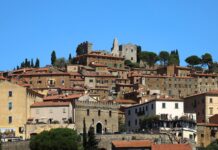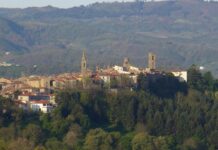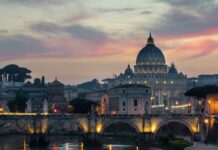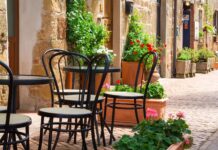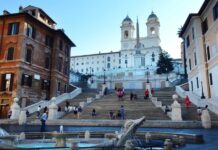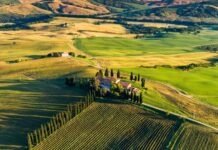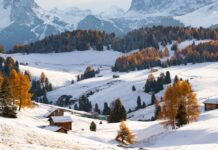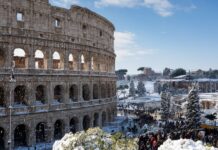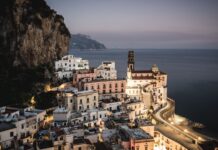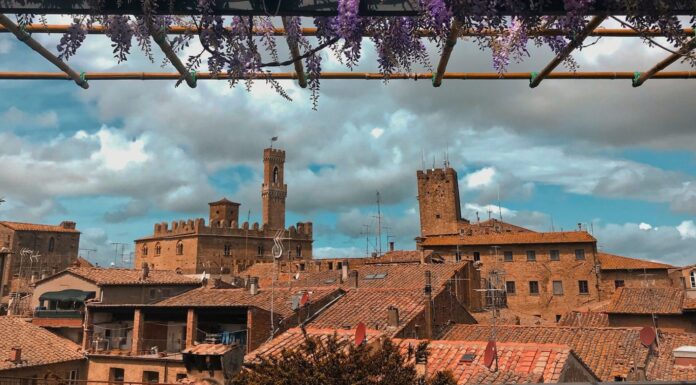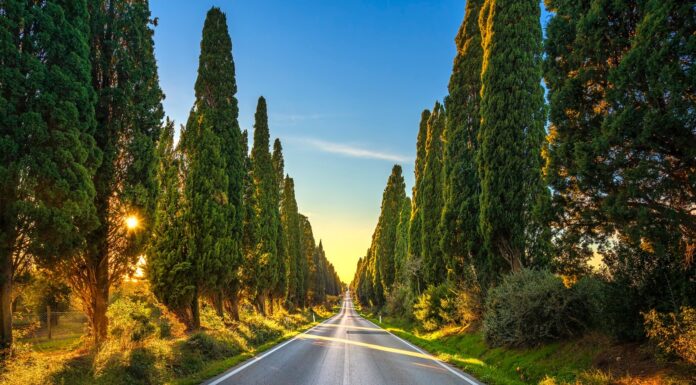Sovana, a charming village based in southern Tuscany, is known as one of the most cherished places in Italy and an iconic spot of the Maremma located at the south-eastern borders of Grosseto, surrounded by vineyards, hills and breathtaking countrysides. Therefore, this little city is considered as the perfect destination for anyone looking for quietness, tradition and local hangouts.
With a detailed and rich history dating back to Roman and Etruscan times, Sovana contains multiple worthwhile sites as it belongs to the trio of the so-called Cities of Tuff (the latter, Sorano and Pitigliano). Moreover, with a population of only 122, timeless Sovana (previously called ‘Soana’) looks easily accessible by driving from Florence or Rome.
Although small and rural, Sovana offers many special ways of making your trip memorable and having fun. Keep on reading to discover why you should definitely add this charm to your Italian vacation plan.
How to Get to Sovana
Despite its quite isolated position, Sovana is accessible by car or public transport (train or bus), with the main airports 2 hours away.
By car, from Florence, you can drive to Sovana by following the A1 highway and by taking the Chiusi-Chianciano Terme exit. Then, you must go from SP478 street to San Casciano of Bagni. After more than 200 km, you just have to take SP20 towards Sovana.
From Rome, on the other hand, you can easily drive through A12 (highway) towards North Italy and take SS1-Aurelia until the Vulci (km 111) exit. There, you just have to follow directions to Manciano and Sovana.
More Ways to Reach Sovana
Alternatively, you can fly from your motherland to Rome (Fiumicino) or Florence (Amerigo Vespucci) and take a rental car or a bus, which will take you to your destination in less than 1.50 hours. We also recommend you not to choose local transport over taxis because of their bad connection to the center.
7 Things to See in Sovana
Here are the best attractions selected for your visit to this fantastic village!
1. The Etruscan Necropolis of Sovana
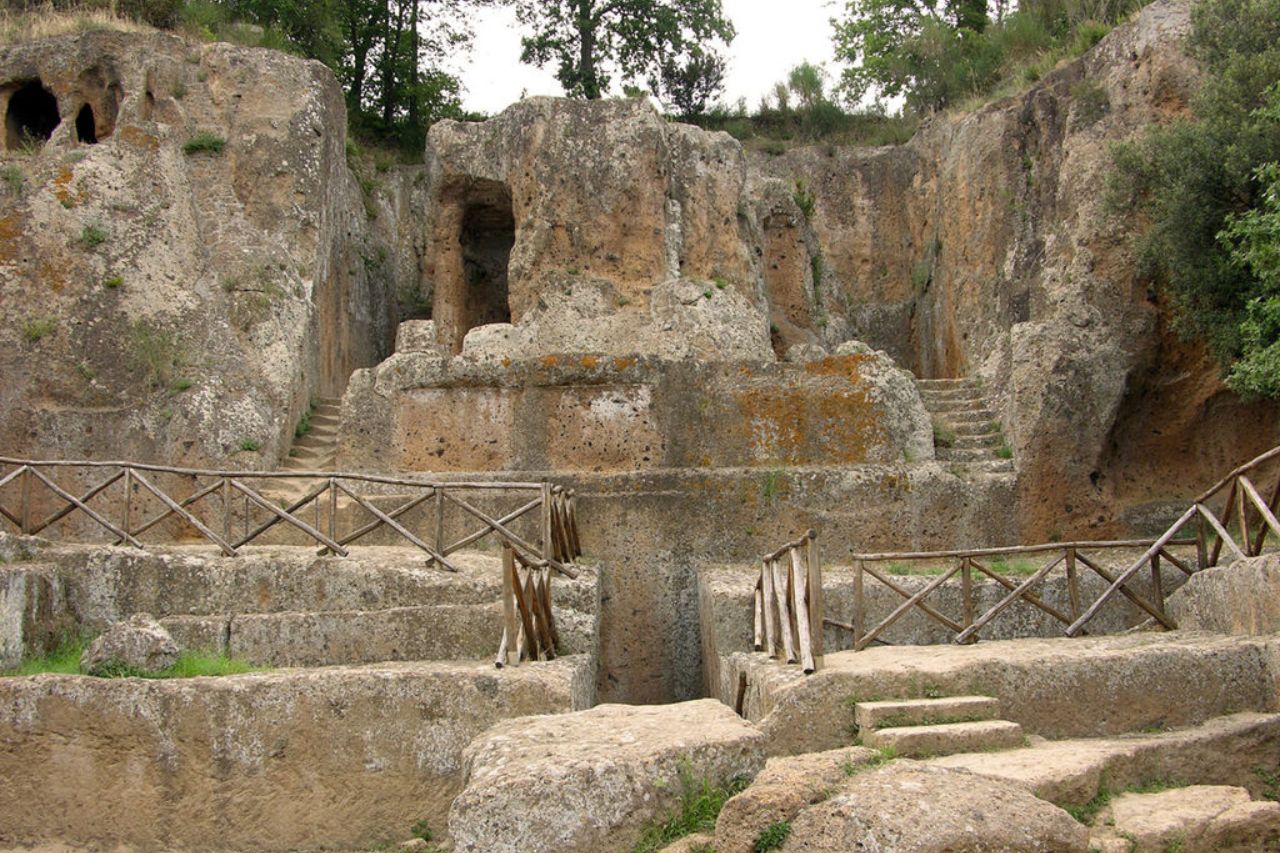
Discovered in 1843 near the town’s heart, Sovana’s Etruscan Necropolis captivates both travelers and archaeology enthusiasts with its diverse array of tombs, from the elegant Tomba Paola to the intricate Tomba Pisa and the captivating Tomba del Sileno.
As you meander through this ancient burial ground, you’re enveloped in the essence of Etruscan civilization.
The grandeur of the Ildebranda and the intricate details of the Typhon tombs transport you back to the 3rd century B.C., where the artistry of the afterlife and the architectural prowess of the Etruscans are displayed in full glory.
Each tomb, a masterpiece carved from tufa stone, tells a story, inviting you into a world where history and mythology intertwine seamlessly.
2. Rocca Aldobrandesca
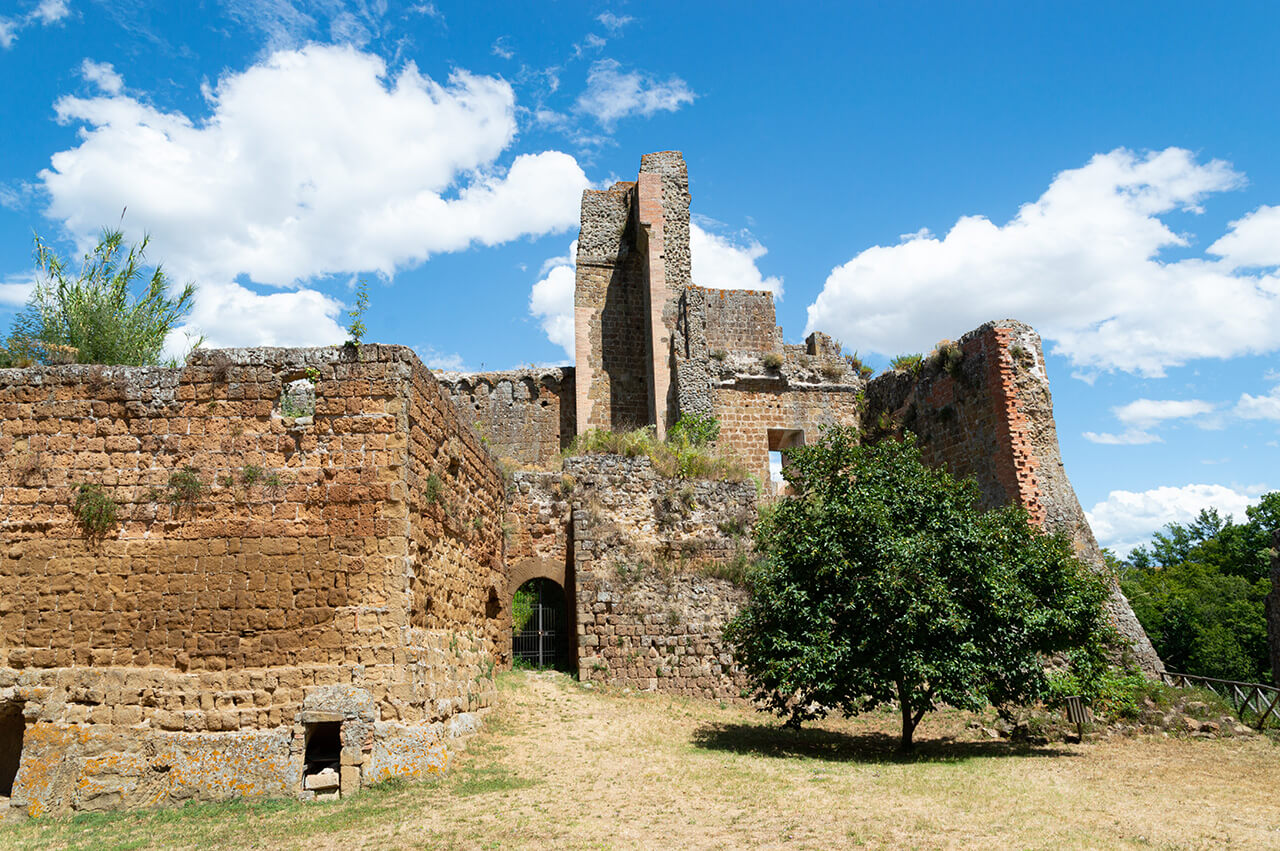
The Rocca Aldobrandesca, based on the east side of Sovana, is an ancient castle that reminds tourists of disputes between the Sienese and the Florentines.
By now, you’ll just see extremely large tuff ruins, remains of the curtain wall (still equipped with protruding apparatus with corbels and stone arches of excellent workmanship, in addition to the access door).
This one was restored around the 15th century after its conquest by the Republic of Siena.
From the 16th century, it was abandoned and due to bad economic and social development of the area, the dismantling and the decay of the Rocca began. Such a breathtaking sight remains.
3. Piazza del Pretorio
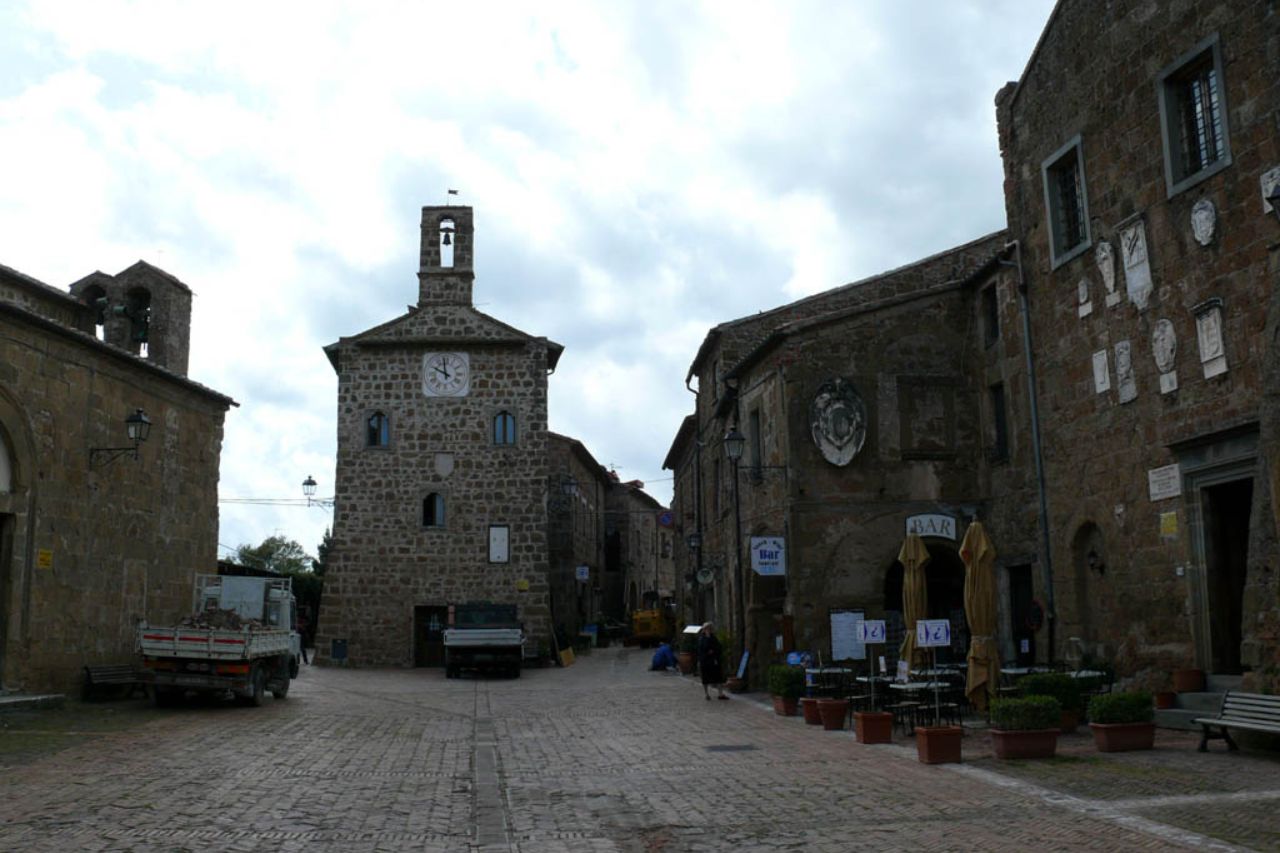
Piazza del Pretorio in Sovana it’s a tapestry of history and culture, alive with the echoes of the past.
With each step on its herringbone brickwork, you’re tracing the outlines of medieval life, surrounded by architectural masterpieces like the Palazzo Pretorio, whose Romanesque facade bears the emblems of past justices.
Nearby, the Palazzo Bourbon del Monte and the Palazzo dell’Archivio stand, the former with its imposing Renaissance facade and the latter marked by its iconic clock.
This piazza, one of Italy’s best-preserved medieval squares, invites you into a world where ancient churches, such as San Mamiliano—the oldest in Sovana—share stories of faith and time.
Here, amidst buildings that witnessed the march of centuries, Sovana’s heart beats, offering a glimpse into a storied past where architecture and history intertwine seamlessly.
4. Alleys of the Village
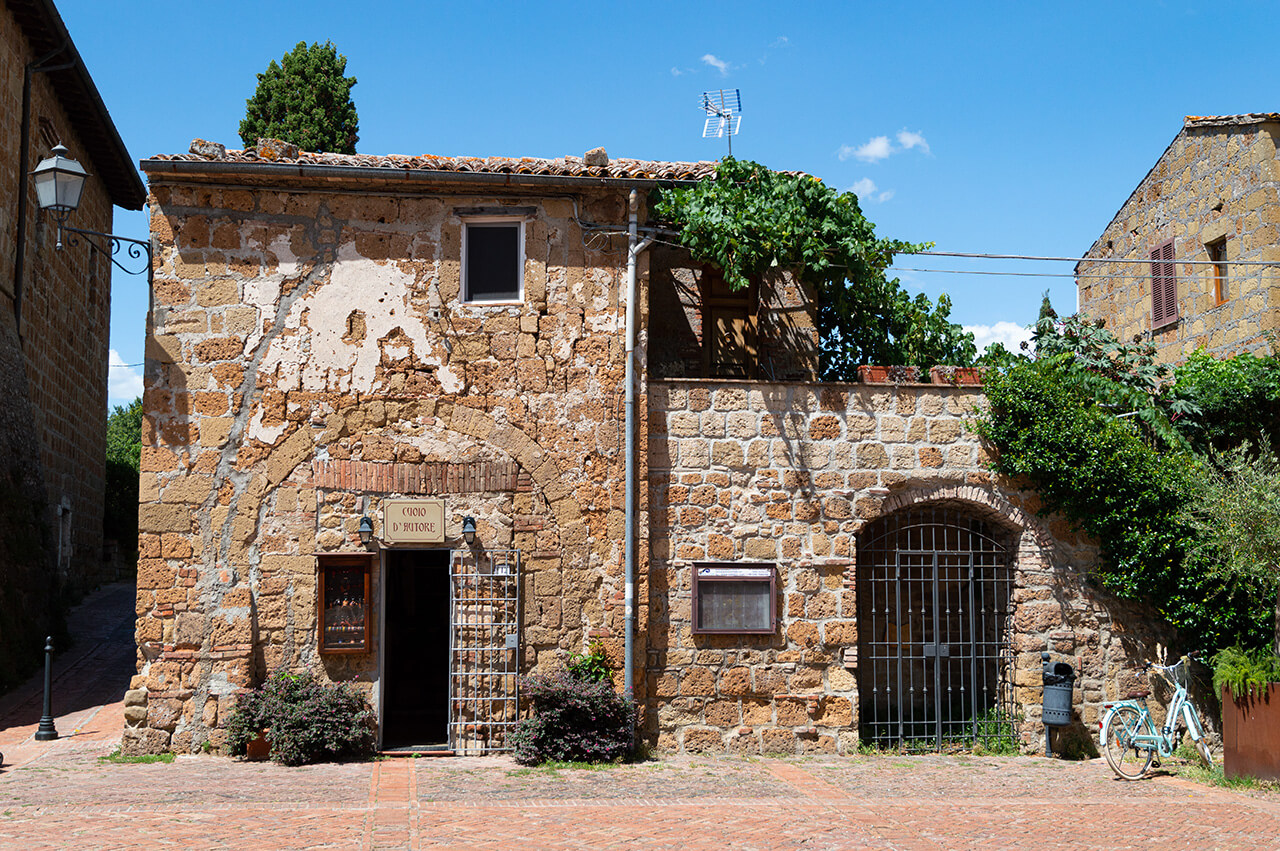
Sovana hides multiple hidden gems. It’s fundamental, then, to mention the large enigmatic boulder in the shape of a closed hand known as “The Hand of Orlando”.
Its origin is strictly connected to mythology or hypotheses which date it back to the megalithic era when it served as a celestial observatory.
Let’s not forget the ancient door located in Piazza Petruccioli, where you’ll start seeing characteristic narrow streets, small stairways and views that open overhanging the cliff below, making it such a majestic and unique place.
5. Churches
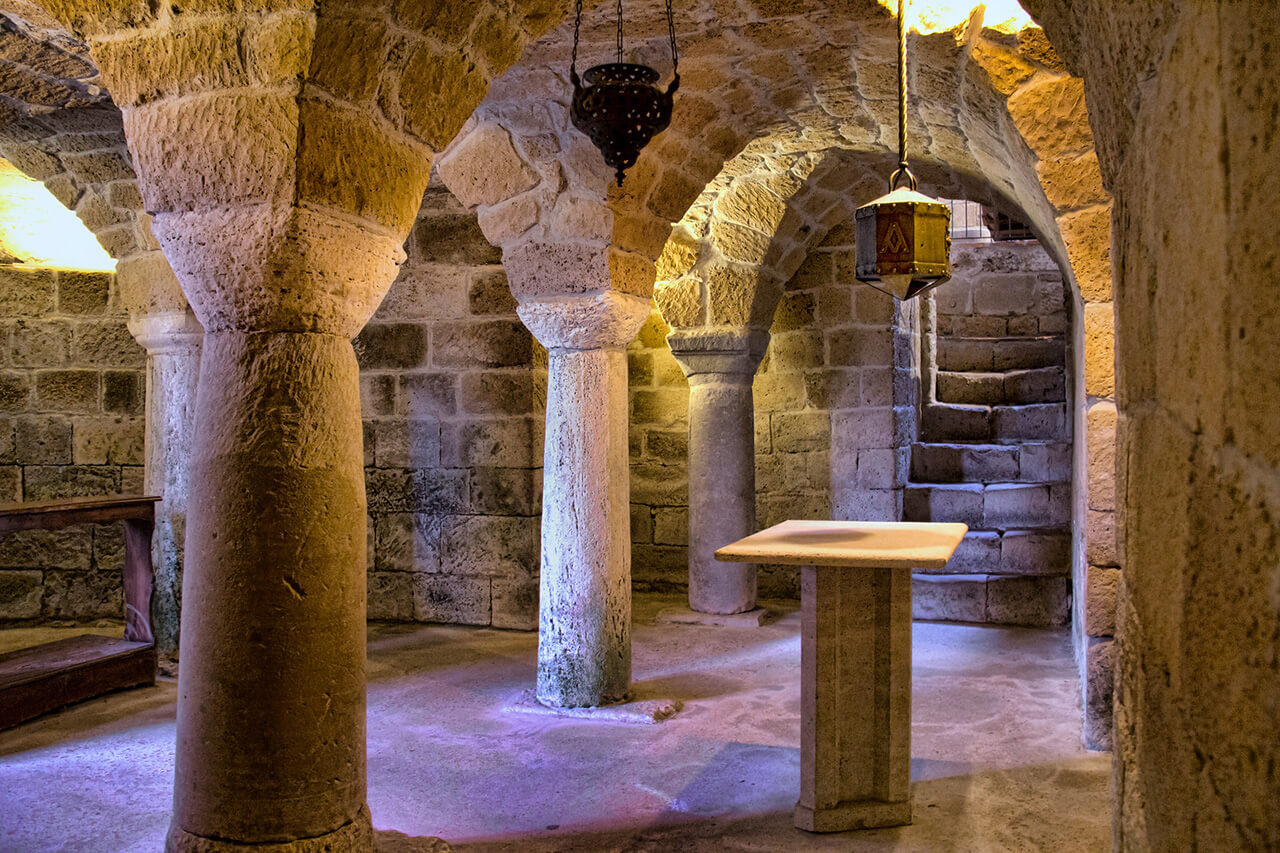
Sovana houses two very relevant buildings for Catholicism.
The Church of Santa Maria Maggiore has the usual characteristics of thirteenth-century buildings, with a Romanesque layout, but with some Gothic elements.
You’ll be able to see a particular stone ciborium carved with the typical medieval decoration of plant, animal, and geometric motifs. On the left side of it, there will be some frescoes of the Umbrian-Sienese school from the beginning of the 16th century.
Equally fascinating, the Duomo is a Romanesque-Gothic style building with a powerful crypt made of elegant and suggestive sculptural decorations and astronomical orientation.
Here, on the left side, you will see a relic called “the urn of San Mamiliano” (containing the remains of the saint) but there will also be many frescoes with pre-Christian motifs.
6. The Treasure of Sovana (San Mamiliano Museum)
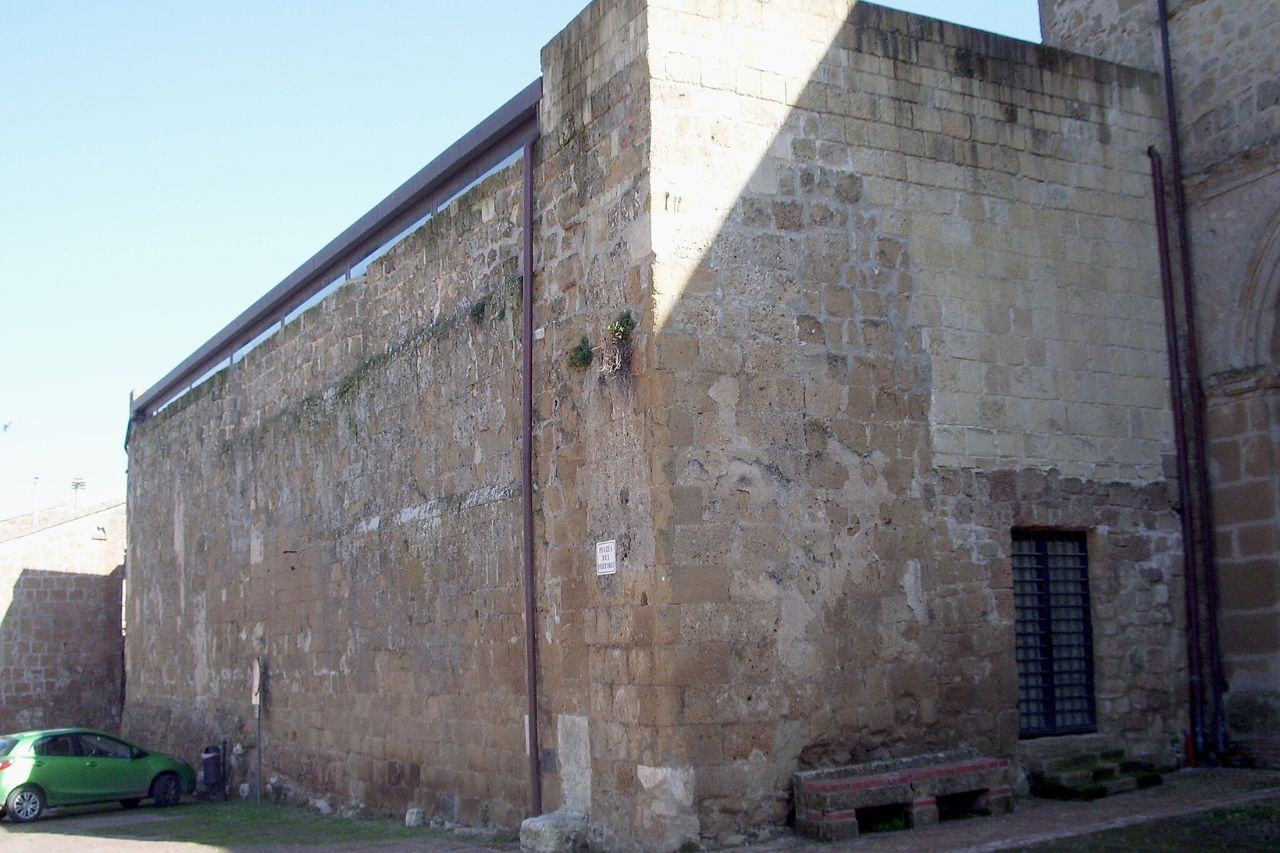
Restored in 2004 by an important archeological campaign, the San Mamiliano Museum is based in a church in the heart of rural Sovana.
Here, experts found a Roman thermal plant and the valuable “Tesoro di Sovana” made of more than 498 gold coins contained in a small vase. This treasure had been under the floor since the 5th century.
This church has become a museum where you’ll see a part of the excavation and this ‘tesoro’. Here, you will also be able to admire Etruscan relics and special ceramic objects.
Italy Travel Secret
Some academics contend that the treasure of Sovana may coincide with that of Montecristo. Indeed, ancient legends narrate the existence of a hidden treasure within the monastery of San Mamiliano on the Island of Montecristo (sparking numerous unsuccessful attempts to uncover it). The discovery in 2004 could affirm this legend: the treasure was indeed concealed in the church of San Mamiliano, in Sovana.
7. The Vie Cave

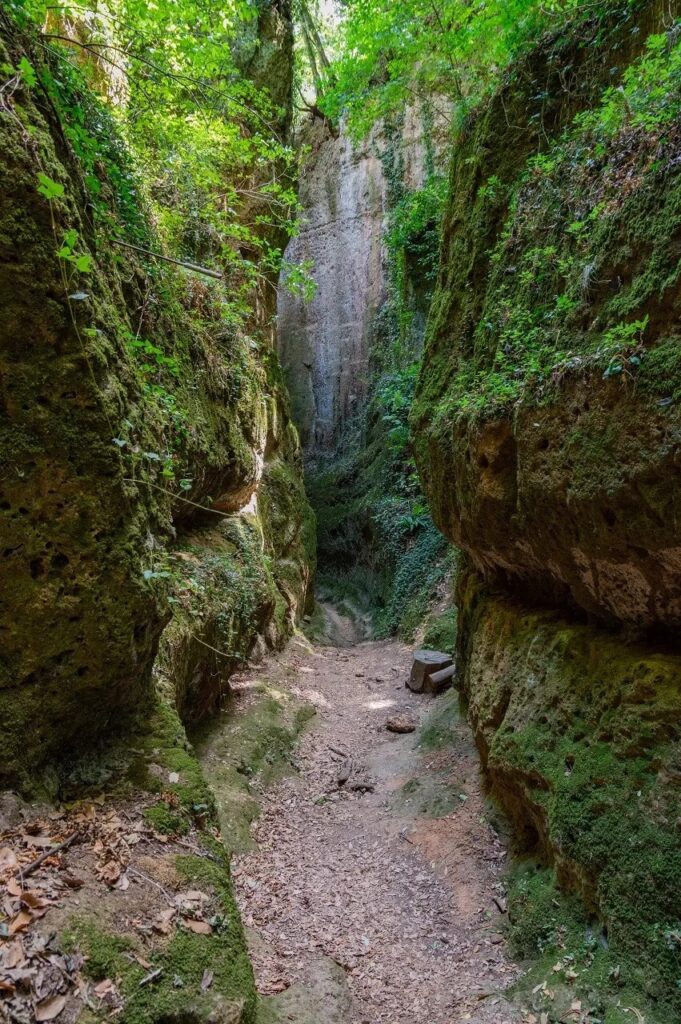
The so-called “Vie Cave” represents a sort of cyclopean corridor made of tufa rock and located in the Maremma between Pitigliano, Sovana and Sorano. Here, you’ll be able to walk and see mysterious engravings and an enveloping nature with a primordial charm.
Don’t forget to visit the Via Cava di San Sebastiano, which is based in the Archaeological Park and it will be possible to enter by going 10 meters away from the antique church of San Sebastiano.
It winds for a few hundred meters along a tortuous and narrow path set between walls up to 25 meters high.
Best Hotels to Stay in Sovana
While small and not cutting edge, Sovana offers many suggestive and authentic accommodation options (B&B, hotels and farmhouses) compatible with any kind of travelers’ needs. Check out our list about top stays in Sovana.
Centrally located B&B

Only 3 km from Sovana, the timeless Hotel Scilla is the ideal place for those who want to be close to the historic center. Here, you’ll find a green area and a private restaurant where you’ll be able to taste typical Italian food. Rooms are quite picturesque and a free parking area is included.
Farmhouse hidden in the vegetation
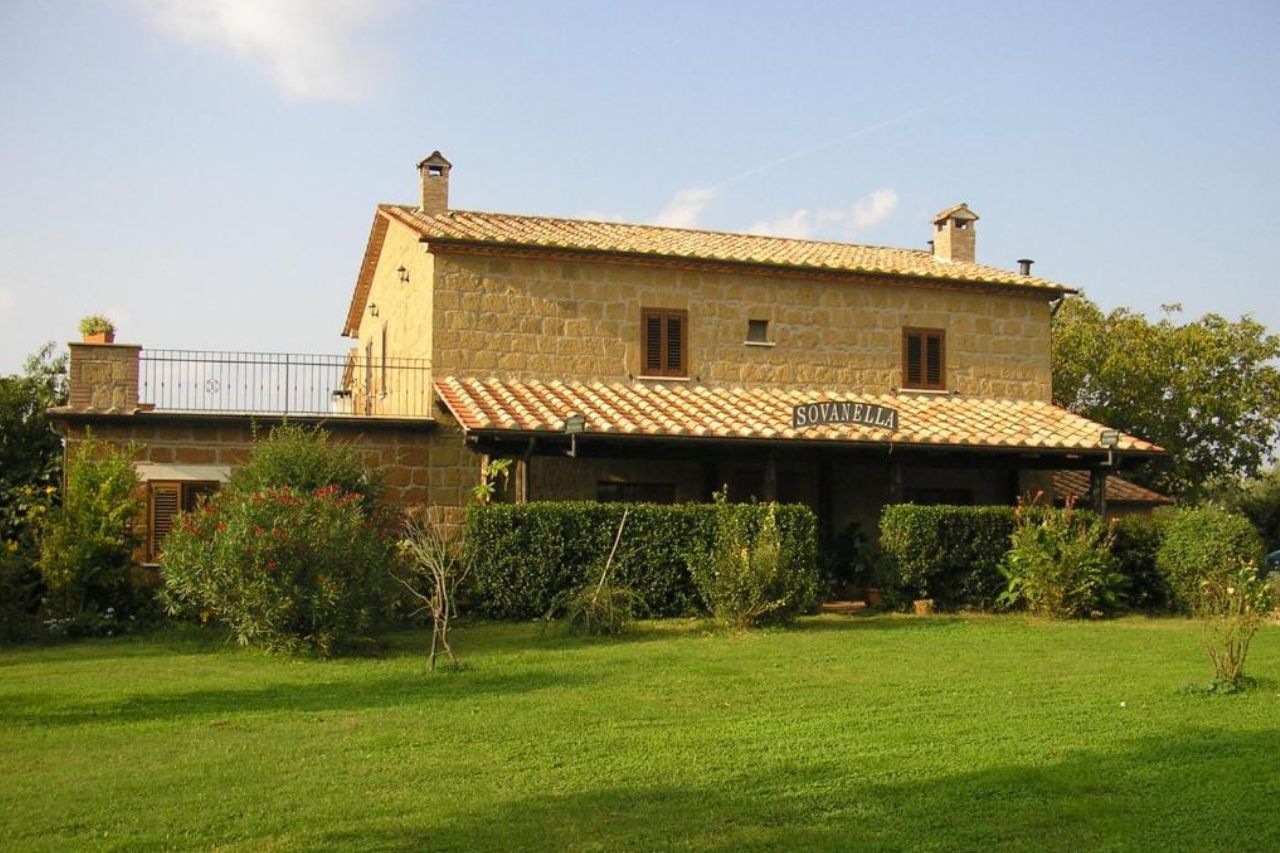
Not so distant from the center’s site, the medieval Agriturismo Sovanella offers huge private rooms with breakfast included (with homemade cakes). It is the perfect option for anyone who’s looking for a place both near to Sorano and Sovana. It is quite close to the Vie Cave, reachable on foot.
Modern Hotel between Pitigliano and Sovana

The appreciated Casa dei Carrai offers private rooms with rural furniture (made of wood), private toilette, towels and silk sheets. Here, there will also be local delicacies to taste.
What to See Around Sovana
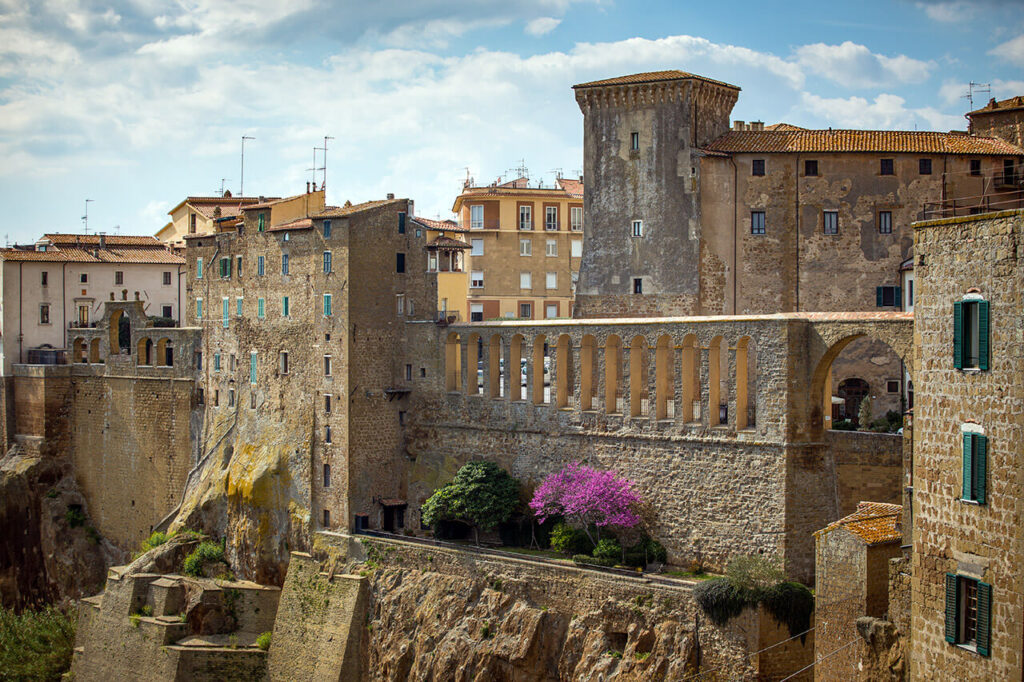
Sovana is the perfect village for those seeking adventures in history and authentic Italian experiences. Nearby places like Pitigliano, Sorano, Radicofani, and Saturnia, with its Thermal Springs, enrich the journey. Let’s explore them further.
Pitigliano
Pitigliano is such a significantly important medieval village, appreciated for its beauty and strategic position. It is located next to Grosseto (in the Maremma) and here it will be possible to admire specific scenic spots and beauties: from Madonna delle Grazie Sanctuary to Alberto Manzi Museum, to Palazzo Orsini or Fontana delle Sette Cannelle.
Sorano
Sorano is a gem of the past. Located nearby Sovana, it is the ideal place for those who love history and culture. Here, you will be able to visit majestic and timeless spots: from the Vie Cave to Castello di Montorio or Castell’Ottieri, to Roccaccia di Montevitozzo and much more.
Terme di Saturnia
Taking its name from the locality, Terme di Saturnia (only 15 km from Sovana) is the perfect place for relaxation lovers who are looking for a spot full of well-being, warm and healing water. Here, a beautiful landscape and luxury hotels will welcome you. We also recommend you to consider nearby and similar places such as: Bagno Vignoni and San Casciano Bagni.
Closing Thoughts: is Sovana Worth a Visit?
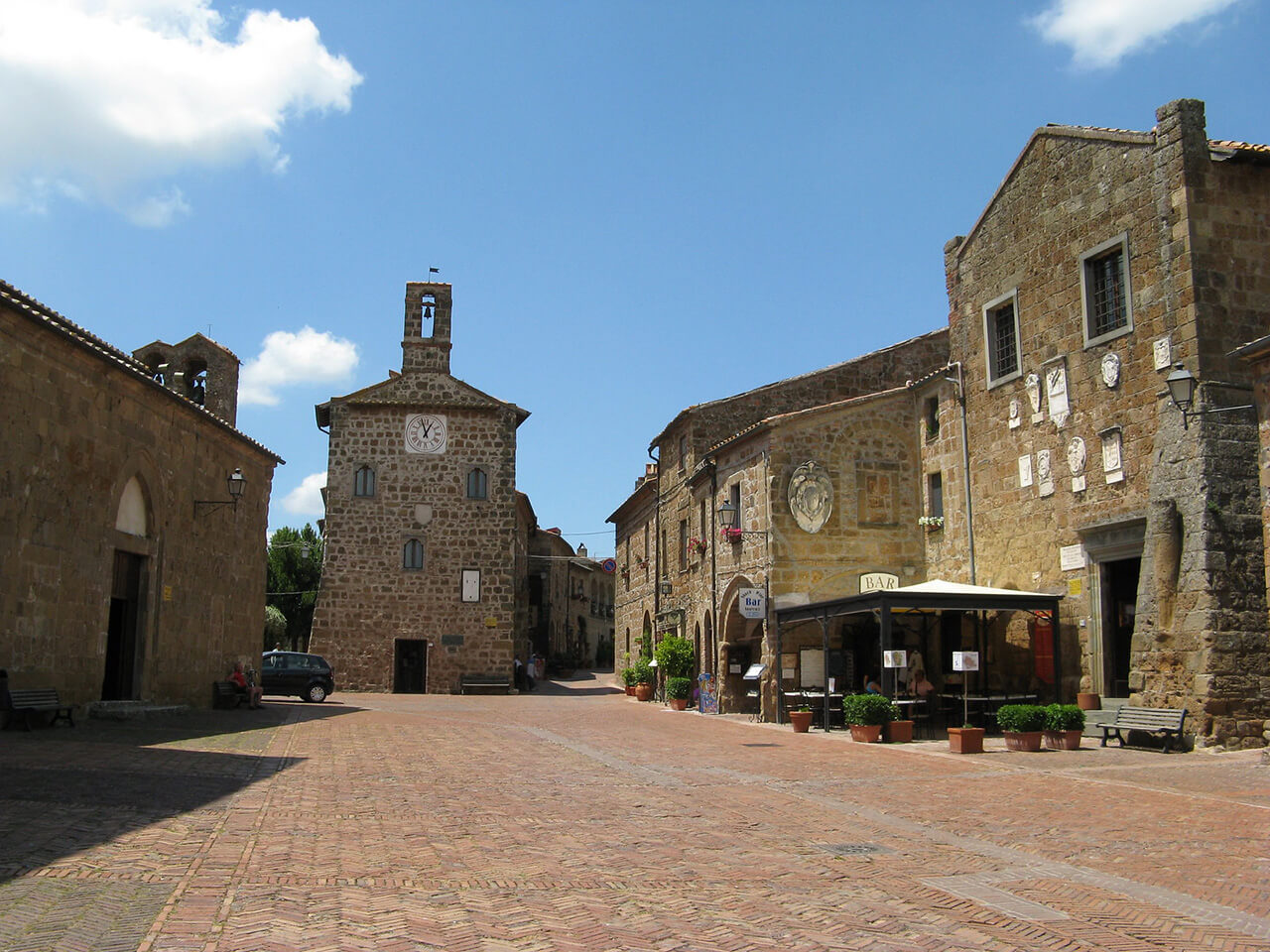
Whether you’re craving the Italian ‘vintage life’ or wandering through Tuscan alleys, Sovana stands out. It’s the ideal choice for your journey, offering a unique escape from the familiar.
The latter is one of the fanciest cities along the Tyrrhenian Coast, especially notable in spring and autumn. It deserves a meticulous visit for its millenary history, unique monuments, and works of art.
From the suggestive Etruscan Necropolis to the famous Vie Cave (more than 25 meters deep), to the characteristic Duomo, where a huge villa (belonging to Pope Gregorio VII) will welcome you.


